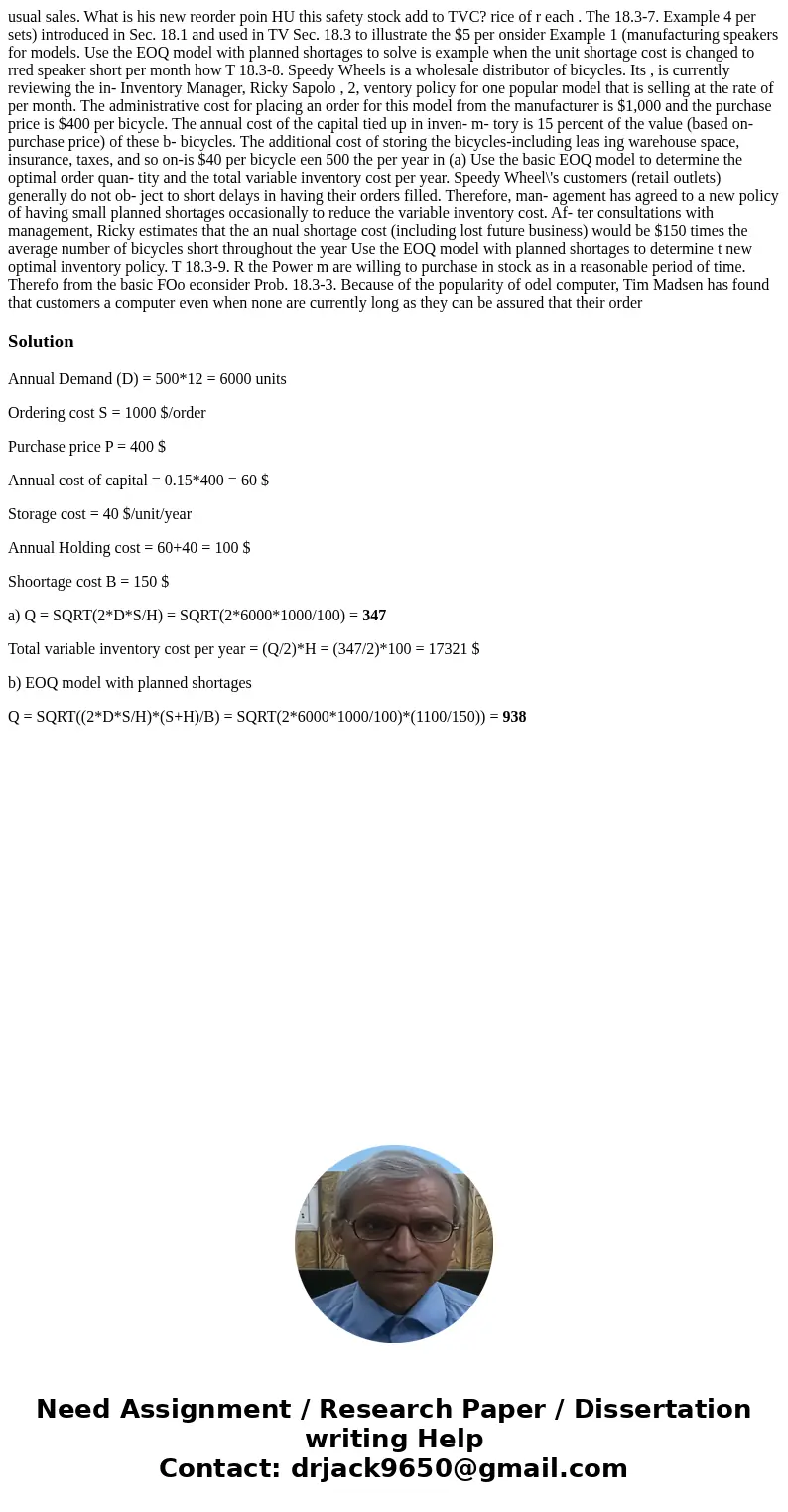usual sales What is his new reorder poin HU this safety stoc
usual sales. What is his new reorder poin HU this safety stock add to TVC? rice of r each . The 18.3-7. Example 4 per sets) introduced in Sec. 18.1 and used in TV Sec. 18.3 to illustrate the $5 per onsider Example 1 (manufacturing speakers for models. Use the EOQ model with planned shortages to solve is example when the unit shortage cost is changed to rred speaker short per month how T 18.3-8. Speedy Wheels is a wholesale distributor of bicycles. Its , is currently reviewing the in- Inventory Manager, Ricky Sapolo , 2, ventory policy for one popular model that is selling at the rate of per month. The administrative cost for placing an order for this model from the manufacturer is $1,000 and the purchase price is $400 per bicycle. The annual cost of the capital tied up in inven- m- tory is 15 percent of the value (based on-purchase price) of these b- bicycles. The additional cost of storing the bicycles-including leas ing warehouse space, insurance, taxes, and so on-is $40 per bicycle een 500 the per year in (a) Use the basic EOQ model to determine the optimal order quan- tity and the total variable inventory cost per year. Speedy Wheel\'s customers (retail outlets) generally do not ob- ject to short delays in having their orders filled. Therefore, man- agement has agreed to a new policy of having small planned shortages occasionally to reduce the variable inventory cost. Af- ter consultations with management, Ricky estimates that the an nual shortage cost (including lost future business) would be $150 times the average number of bicycles short throughout the year Use the EOQ model with planned shortages to determine t new optimal inventory policy. T 18.3-9. R the Power m are willing to purchase in stock as in a reasonable period of time. Therefo from the basic FOo econsider Prob. 18.3-3. Because of the popularity of odel computer, Tim Madsen has found that customers a computer even when none are currently long as they can be assured that their order 
Solution
Annual Demand (D) = 500*12 = 6000 units
Ordering cost S = 1000 $/order
Purchase price P = 400 $
Annual cost of capital = 0.15*400 = 60 $
Storage cost = 40 $/unit/year
Annual Holding cost = 60+40 = 100 $
Shoortage cost B = 150 $
a) Q = SQRT(2*D*S/H) = SQRT(2*6000*1000/100) = 347
Total variable inventory cost per year = (Q/2)*H = (347/2)*100 = 17321 $
b) EOQ model with planned shortages
Q = SQRT((2*D*S/H)*(S+H)/B) = SQRT(2*6000*1000/100)*(1100/150)) = 938

 Homework Sourse
Homework Sourse